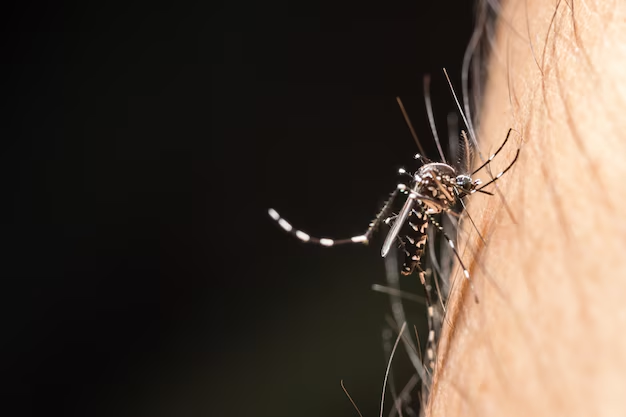Understanding Malaria: How It Spreads and What You Need to Know
Imagine planning a tropical vacation or a business trip to a region full of lush landscapes and rich cultural experiences. As thrilling as the journey may seem, there's a silent threat lurking in many of these beautiful regions, known as malaria. It’s crucial to understand how malaria spreads, its impact, and ways to protect yourself—knowledge that could turn a potential threat into something manageable.
The Basics of Malaria Transmission
What is Malaria?
Malaria is a life-threatening disease caused by Plasmodium parasites. These parasites are transmitted to humans through the bites of infected female Anopheles mosquitoes. There are several species of Plasmodium, but the most common ones that infect humans are Plasmodium falciparum, Plasmodium vivax, Plasmodium ovale, and Plasmodium malariae.
How Do You Catch Malaria?
The primary mode of malaria transmission is through the bite of an infected Anopheles mosquito. Here’s how it generally happens:
- Bite of an Infected Mosquito: When a mosquito bites a person already carrying the malaria parasite, it ingests blood containing the parasite.
- Mosquito Becomes a Carrier: Inside the mosquito, the parasites undergo development and multiply.
- Transmission to Humans: When this infected mosquito bites another human, it transfers the parasites via its saliva.
Can Malaria Spread Between Humans?
While the majority of malaria cases result from mosquito bites, there are some less common transmission routes:
- Congenital Transmission: From a mother to her unborn child.
- Blood Transfusions: If the blood is infected with Plasmodium.
- Organ Transplants: From a donor carrying the parasite.
- Shared Needles or Syringes: Among drug users.
The Global Footprint of Malaria
Where is Malaria Common?
Malaria exists predominantly in tropical and subtropical regions. The highest transmission areas include:
- Sub-Saharan Africa: Bearing the brunt, with the majority of cases and deaths.
- South Asia and Southeast Asia: Regions with significant cases but fewer deaths due to improved access to treatment.
- Central and South America: Lower incidence due to better control measures.
- Pacific Islands: Various islands where malaria remains a challenge.
Why is Malaria More Prevalent in Certain Regions?
Several factors contribute to the prevalence of malaria in specific areas:
- Climate: Warm climates favor the breeding of Anopheles mosquitoes.
- Environmental Conditions: Stagnant water sources are ideal breeding grounds.
- Healthcare Access: Limited access to healthcare hampers prevention and treatment efforts.
- Socioeconomic Factors: High poverty levels can limit preventive measures like bed nets or insecticides.
The Impact of Malaria on Health and Society
Health Consequences
Malaria can have severe health impacts, including:
- Fever and Chills: The most immediate and common symptoms.
- Severe Anemia: Due to the destruction of red blood cells.
- Organ Failure: Particularly affecting the kidneys and liver.
- Cerebral Malaria: Potentially leading to coma or severe neurological damage.
- Mortality: Especially among young children and pregnant women.
Societal Impact
Malaria not only affects the health of individuals but also has broader societal implications:
- Economic Burden: Lower productivity, increased healthcare costs, and tragically, loss of life.
- Educational Impact: Frequent illness leads to high absenteeism in schools.
- Healthcare Strain: Overburdened healthcare systems in endemic regions.
Prevention: How to Safeguard Yourself
Personal Protective Measures
- Use Insect Repellent: Apply on exposed skin and clothing.
- Sleep with a Mosquito Net: Use insecticide-treated nets for added protection.
- Wear Protective Clothing: Long sleeves and pants reduce skin exposure.
- Stay Indoors: Especially during peak mosquito feeding times, dusk and dawn.
Medications and Vaccines
- Antimalarial Drugs: Consider prophylactic medication if traveling to high-risk regions—talk to a healthcare provider for options.
- Vaccination: There is a malaria vaccine known as RTS,S (also called Mosquirix) available in some areas, primarily targeting Plasmodium falciparum.
Managing Malaria: Steps for Those Affected
Recognizing Symptoms Early
Being vigilant about the symptoms is crucial:
- Symptoms often include headache, muscle aches, fever, nausea, and vomiting.
- Monitor symptoms if you have been in an area with malaria risk and seek medical attention.
Seeking Timely Treatment
- Diagnostic Testing: Confirm if symptoms are due to malaria.
- Prompt Treatment: Effective antimalarial treatment options are available and crucial to reduce complications.
Future Prospects: Innovations and Challenges
Advances in Technology
- Improved Diagnostic Tools: Rapid diagnostic tests enhance early detection.
- Genetic Research: Identifying and tackling drug-resistant strains.
- Advanced Vaccines: Continuous research into developing more effective vaccines.
Persistent Challenges
- Drug Resistance: A growing concern that complicates treatment.
- Climate Change: Altering mosquito breeding grounds and spreading malaria to new areas.
- Sustainable Funding: Ensuring consistent resources for prevention and treatment.
In the battle against malaria, understanding how it spreads and taking active preventive measures are your best allies. Whether you're living in or traveling to an endemic region, remaining informed and prepared is crucial. Knowledge empowers you to protect yourself, seek timely treatment if necessary, and contribute to global efforts in controlling this disease.
🌍 Key Takeaways and Tips 🌟
- Transmission: Mainly through Anopheles mosquito bites.
- Hotspots: Prevalent in tropical areas; especially Sub-Saharan Africa.
- Symptoms: Look out for fever, chills, and muscle aches.
- Prevention:
- 🏕️ Use insect repellent and mosquito nets.
- 💊 Consider prophylactic medication when traveling.
- Early Treatment: Essential to avoid severe consequences. 🤒
By being proactive, you contribute not just to your own safety, but to the global effort against malaria. 🛡️✨
